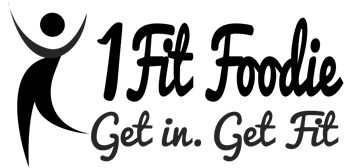Personal Training
HKC Kettlebell Certification Review + A Krazy Kettlebell BURN
This past weekend I attended the HKC Kettlebell Certification in Ho-Ho-Kus, NJ. The certification workshop was held at the American Eagle MMA and was led by the amazing, Phil Ross, RKC. This was by far one of the best ‘fitness related’ workshops I have ever attended. Last summer, I also attended a TRX certification in Boston (which was great!) But I knew going into this day of learning, it would be a lot more challenging, yet I would leave feeling 100% more confident training both myself and using proper kettlebell techniques with my clients.
Many people in the health and fitness field are familiar with the RKC, which is a kettlebell program that has become the gold standard, now with over 1,500 certified instructors in over 43 countries. The RKC program is the ONLY current program which insists on stringent testing of multiple skills and strengths. Currently only an average of 70% of RKC candidates succeed in passing the requirements by which they can proudly hold themselves forth as “RKC-certified”. The RKC is not for everyone, however there are still coaches, trainers and athletes who still want to become certified, not at the level of the full commitment of the RKC. They want to understand the most important aspects of kettlebell training, proper form, technique, demonstrate strength and power. ENTER THE HKC. “an opportunity to build a superb and rock-solid foundation as a kettlebell professional. (source)
What is the HKC Certification?
- You will learn a deep understanding of the true benefits of kettlebell training-for both yourself and your clients.
- A solid knowledge of vital kettlebell training safety procedures.
- A workmanlike grasp of the fundamentals of biomechanics—to ensure your clients move with perfect form and avoid injury.
- A grasp of the key HardStyle skills and principles of strength.
- The ability to competently perform the three foundational kettlebell exercises (the Swing, the Get-Up, and the Goblet Squat).
- The confidence you can now correctly teach the three essential kettlebell exercises—and troubleshoot common technique problems.
- The unique HKC template for designing an unlimited number of effective kettlebell workouts. (source)

Right away we opened our books and the learning began. I have never been more glued to an instructor. Phil Ross presented kettlebell training with such passion, it is impossible not to be blown away and immediately drawn toward his energy. After a quick summary of the history of the Kettlebell, we were up and moving. Dowel and body weight Mobility drills began our 10 hour workshop.
The most useful stretch that I took away from this day was the HKC hip flexor stretch. I knew that most of my clients (as well as myself) could benefit greatly from this amazing stretch. One of the tightest areas I see on clients time and time again is tight hip flexors. Why? Most of the population sits at a desk all day which can be a main cause. The hip flexors are extremely powerful muscles and if they take control they can cause all sorts of imbalances and pain causing someone to avoid exercise.
If you perform a squat and the toes are slightly pointed outward in order to perform it properly, this is a sign of tight hip flexors. Tight hip flexors can also be the cause of low back pain during the squat and kettlebell swing. The moment that those hips loosen up, the squat, swing and deadlift can become a whole new (pain free!) and effective beast!
How to perform the RKC Hip Flexor Stretch.
- Start by kneeling with one leg forward with your hips squared straight ahead and level. (legs should be hip width apart)
- You can place your hands on your hips, back of your head or outstretched above your head. Squeeze your glutes and push forward with your pelvis; simultaneously trying to lengthen your spine.
- Be sure to keep the pelvic tilt as you reach forward.
- Avoid letting your knee travel past your front toe. Exhale as you go forward and inhale as you come back up, repeat a few times moving in and out of the stretch (5 breaths each side and repeat)
(source)
After some stretching and mobility we got into some more fun with the dowel
The best way to train and get stronger is to mimic the bodies natural movement pattern. Why put our bodies in a compromising position that in no way carries over to real life? KB training require you to learn how to move your body. Sitting in a machine or lying on a bench is not going to give you the athletic ability nor make your body feel the way it should be meant to move and work. Move better, feel stronger, pick up a Kettlebell.
- To BEGIN the movement of the kettle bell, you should squat down (pushing your hips back) until the kettlebell is well clear of your groin,and flick the kettle bell back between your legs,this is the only time you use your arms to push the weight across,to begin the momentum,the arms should not move the weight during the swing
- At this point in the swing, you should have your forearms push up against your groin and the kettle bell extending out behind you. When coming back up, you will simultaneously squat up and thrust your pelvis forward. When I say thrust, I mean really thrust (TWSS) squeeze those glute and keep your core engaged. You almost want to feel like you are doing a crunch with your abs at the top of the movement.

I remember when I first started, this is what my swing looked like:
Not bad at all BUT now when I watch it over and over again, I notice that I led with my arms too much in this movement. The bulk of the POWER comes from the lower body and abdominal muscles. Not bad at all, but it looks a little better now 🙂
Next move we had to perfect was the Turkish Get Up. The TGU is a very involved exercise that took the most time to learn and perfect by far. Like the swing, I have learned the TGU a couple years ago and use it in my training, but this is certainly more of an advanced kettlebell technique that I am always looking to improve on.
The TGU is a highly functional movement that works every single muscle in the body. It takes extreme coordination, power and strength!
If you want to learn more about the TGU. Click here for an amazing article!
I have shared a video below from Dan John who shares an incredible step by step instructional on how to perform the TGU. 
Next up was the goblet squat. The goblet squat is one of my favorite exercises
The goblet squat is extremely powerful and uses just as much of the core as it does the lower body. I truly see it as an abdominal exercise AND a leg exercise combined. The weight is placed anterior from the body, thus forcing you to engage every muscle in the core region in order to stay upright.
The goblet squat is a phenomenal powerhouse of an exercise because it trains the body in a way it is supposed to move. There are some exercises in a traditional gym that yes, have their time and place, however for the most part, they put our bodies in positions and movements they are not meant to do.Take the hamstring curl machine.
This exercise simply does not carry over to our daily lives. How often do you see someone performing the hamstring curl movement? Probably close to never. Now, on the other hand, how often do you bend to pick something up? Every single day. Why not train movements, not specific muscles. in order for our bodies to feel better, move better and stay pain free. We need to train our bodies to move the natural way they are supposed to.
The reason I love a goblet squat is because this is the most basic human movement and performed in a way that is natural for the body.Tight hips, poor mobility and flexibility will only worsen with exercises such as the barbell squat. The goblet squat helps alleviate all of these issues in addition to increasing core strength tremendously.
Grab the bell with a TIGHT grip, keeping your elbows tucked and glued to your sides. Make sure you are not leaning the bell against your chest. Hold it in place as you perform a goblet squat, keeping your chest up and shoulders back. You MUST maintain a tall posture and tight belly or else you will fall forward on your toes. If you feel your hips are tight, try that RKC stretch!
I have included the goblet squat in one of my posts “5 favorite exercises” all of which are amazing exercises to add into your routine.
The last hour of the workshop was the exam. Each of us had to go through and perform the kettlebell swing, goblet squat and Turkish Get Up. It was a bit nerve wracking due to the fact that I felt “on stage” having the entire class as well as the instructor glued to my form, but I put my nerves aside and performed the movements as if I was simply working out on my own.
|
CIRCUIT 1
|
Reps
|
|
KB Swings
|
20 double arm
|
|
Reverse lunge
|
10 each side (hold KB’s in each hand)
|
|
Elbow plank knee to elbow
|
20 (each side)
|
|
Standing press
|
10 reps
|
|
Burpees
|
20
|
|
CIRCUIT 2
|
|
|
Bottoms up goblet squat
|
15 reps
|
|
Single arm swing
|
15 each arm
|
|
Sumo stance KB back row
|
15 reps
|
|
Butterfly sit ups
|
20
|
|
Box jumps
|
20
|
|
TABATA
|
|
|
Swings
|
|
|
Full sit ups
|
|
|
Mountain climbers
|
|
|
Russian twist holding KB
|












I’m a little confused by the Turkish get up video.
I thought you’re meant to end in the standing position. Is there a difference?
Can you explain the Sumo Stance Kettlebell Back Row please? I can’t find it online.
Thanks!
I absolutely LOVE your workout posts. They’re the best. Thank you for always giving us non-traditional works. I’m so tired of seeing things like “bicep curls” and “leg curls” and “leg extensions.”
Your workouts are fun, but challenging!
Also, I was wondering, why is it that when I type in 1fitfoodie.com into my address bar, your website doesn’t work? I have to get to your website in other ways lol. Like finding a link to a specific post of yours from your facebook page or something.
*non-traditional workouts